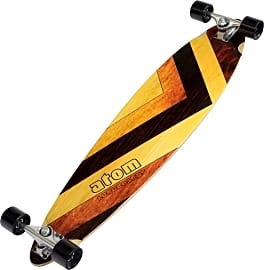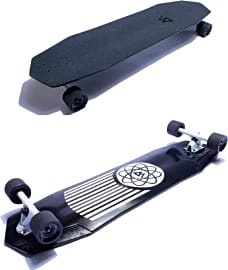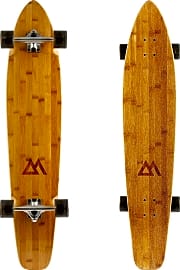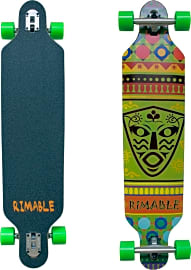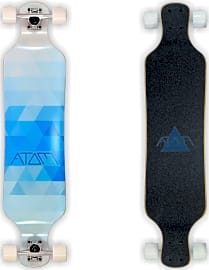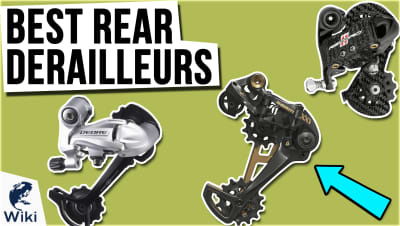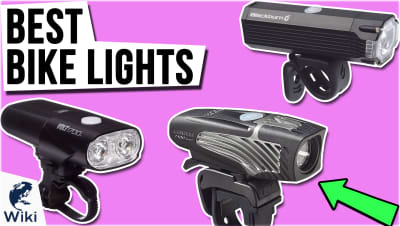The 10 Best Longboards

This wiki has been updated 45 times since it was first published in March of 2015. Look beyond the routine challenge of a standard-length skateboard to one of these stylish longboards. Faster than a regular board because of wheel size, these are ideal for cruising, downhill racing, slaloming, sliding, and personal transport. With designs that vary from vintage and basic to modern and aggressive, there's sure to be a model that suits your taste and skill. When users buy our independently chosen editorial picks, we may earn commissions to help fund the Wiki.
Editor's Notes
May 07, 2021:
We've eliminated a model from Fractal 9 after a number of unfortunate long-term results, as well as a lack of availability. Our new addition this time around is the Magneto Kicktail Cruiser, which is about as long as they come, a good design for high speeds and long, sweeping lines.
While the Loaded Tan Tien Flex 2 is still our overall favorite, we highly recommend the Magneto Carbon Fiber if you're open to upgrading the bearings at some point in the future. Its light weight and responsive flex make it a dream to ride, especially for advanced users. As always, be as careful as possible when boarding, and always wear a helmet.
March 30, 2020:
When it comes to longboards there are a lot of different styles to choose from, and each is well-suited to certain riding styles. As should be obvious from the name, directional boards, like the Retrospec Zed Cruiser, Sector 9 Fractal Complete, Atom Pin-Tail, and Quest Super Cruiser Artisan are meant to go in a single direction, so they will have a different feel when their tail is facing forward. This makes them best suited to dowhill runs and long-distance cruising. Conversely, symmetrical longboards, such as the Loaded Tan Tien Flex 2, Magneto Carbon Fiber, White Wave Mayhem, Atom Drop Deck, and Volador Freeride Drop Through Cruiser are more versatile, since they can be used for freeriding in addition to cruising and, depending on the design, bombing down slopes. Whichever kind of longboard you choose, safety should be a top priority. That means always wearing a helmet designed for skateboarding even if you only plan a short jaunt around the block.
There are dew designs more classic than a pinboard or cruiser, so if you want something that embodies that Dogtown vibe of the 70s, you'll probably really like the Atom Pin-Tail, Retrospec Zed Cruiser, and Quest Super Cruiser Artisan. Of these, the Retrospec Zed Cruiser has the most vintage appearance, but Atom Pin-Tail offers a better grip and and an overall smoother ride.
On the opposite end of the spectrum we have the Magneto Carbon Fiber, which is modern in both design and construction. It is crafted from a combination of fiberglass, carbon fiber, and bamboo, which results in a deck that is both lightweight and impressively durable at the same time. Due to its symmetrical shape, it is great for freestyle riding, as it feels the same no matter which way it is facing. Unfortunately, you'll probably want to replace the bearings immediately after purchasing it, as the stock ones it comes with don't roll for a very long time after a kick.
The Loaded Tan Tien Flex 2 is another symmetrical board that incorporates fiberglass for durability. It has cambered profile and drop-through truck mounting that make it feel very stable, and you can choose from one of three flex levels, so you can get a low flex one if you want something better suited to fast runs or a high flex one if you prefer a more mellow ride and want your board to absorb all the road vibrations.
Special Honors
Bustin Boards Custom If you are having trouble finding a board that represents your riding preferences and sense of style, you may be happier with a Bustin Boards Custom longboard. You start by choosing a deck shape and length you like best, before going on to pick out your graphics, background, wheel and truck color, artistic finishes, and bearing type. bustinboards.com
A Brief History Of The Longboard
For a number of years, these new wheeled boards were seen as little more than an enjoyable alternative as a surfer waited for better water conditions.
While it's difficult to pinpoint the exact moment the modern skateboard was born, the origins of the sport are well known, and nearly mythical. By the mid 20th Century, surfing had become a popular sport, and the cradle of the American surf movement was the coast of California. In the last years of the 1940s and in the dawn of the 1950s, a number of Los Angeles surfers began to adopt a new wheeled platform that they used on land when the waves were too flat for proper surfing.
For a number of years, these new wheeled boards were seen as little more than an enjoyable alternative as a surfer waited for better water conditions. By the 1960s, however, skateboarding was well on its way to becoming a distinct sport. 1964 saw the short-lived publication of a magazine called The Quarterly Skateboarder and the first sponsored contests and skating events took place at around the same time.
It was not until the 1970s that skateboarding began to catch on with a more mainstream audience. The development of durable, stable polyethylene wheels made skating safer and easier, and soon a range of standardized axles -- called "trucks" on a skateboard -- made control and stability even more reliable.
Modern skateboards feature many minute variations, but there are two basic classes of board, which can be referred to as the skateboard and the longboard. While skateboards are shorter, have smaller wheels, are more nimble, and are often used for trick skating, longboards tend to have larger wheels and, of course, a longer overall design. These two factors make the longboard both fast and stable (in fact records show riders atop longboards moving at more than 80 miles per hour), and for this reason it is the go-to choice for people who use a skateboard less for trick skating and more for long distance cruising.
Choosing The Right Longboard For You
The length of a longboard can vary greatly. Most are longer than 33 inches from end to end, though many longboards have much longer decks, with sixty inch boards not an uncommon sight. Most longboards measure somewhere in the 40 to 50 inch range. The deck shape of the longboard can come in variations known as pintail, swallowtail, drop-through, and flat-nose, to name a few, and many longboards still closely resemble the surfboards that inspired the first skaters all those decades back.
Most longboards measure somewhere in the 40 to 50 inch range.
Choosing your longboard's length should be primarily informed by your own size, and even your own preference; you may want to go longer based on your height, but in turn, the length also dictates maneuverability. If you're into doing tricks, a shorter board might work best for you. A shorter board translates to quicker turns; a longer board is best for cruising at high speeds.
As for the deck shape of the board you choose, that should be predicated on how you will use your board. A "top mount" deck provides extra control during turns but less stability during downhill speed, for example, while a "drop through" deck makes turning slightly more difficult but allows for stable speed riding with reduced wobble.
Beginning riders should opt for a longboard with plenty of grip tape covering its surface, and should also consider a board with foot kicks, which are raised sections of the board that help keep the rider's foot nestled in place. Almost all longboards are made from plywood, with materials ranging from bamboo to maple to hardwoods used in the layering.
Different deck constructions offer varied levels of flexibility, and your experience level might also dictate which deck type is best for you. More flexible boards allow for better speed each time you push off with your foot, but their movement may destabilize a rider not yet steady on his or feet.
Longboard Upkeep And Maintenance
One of the simplest ways to keep your longboard safe and stable is to frequently check and tighten its bearings. The wheel bearings can be securely tightened without compromising fluidity of motion, while loose bearings can lead to increased board wobble and reduced control and safety. Check the bearings regularly if your ride regularly, and take the time to tighten them whenever needed.
The wheel bearings can be securely tightened without compromising fluidity of motion, while loose bearings can lead to increased board wobble and reduced control and safety.
Some longboards come with lubricated wheels, but it's a good idea to apply your own from time to time. Just make sure to pick a lubricant that won't corrode the wheels, axles, or any other components, and try to choose one that won't stain or damage the deck, either. And know that lubrication is not necessary for most boards; what is needed for safe and proper longboard riding are bearings that are as clean as possible. Dirt and debris caught in your board's wheel bearings can lead to a dangerous lack of stability.
Replacing any worn or damaged element on your longboard is important for safe and proper use. This includes worn down wheels, scuffed or torn grip tape, or even an entire axle if need be. You can rotate longboard wheels just the same as you do with a car's tires, but as with a motor vehicle, this can only be done once or twice before they need to be replaced.
And of course one should always wear a helmet when riding. Safe longboarding should also involve gloves, and even knee and elbow pads for good measure. This is especially true both for younger and for older riders -- while riding a longboard is enjoyable, it can also cause serious injury without proper precaution.



